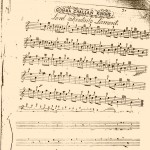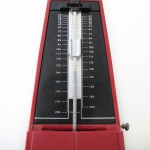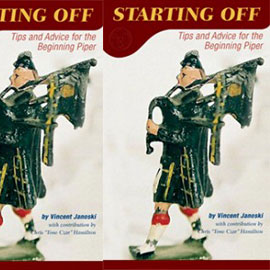The Music Is Yours
We can all admit it. The highland bagpipe has a less-then-lofty image among the listening public as compared to other instruments. While it may be true that many in the U.S. are too used to hearing bagpipes played poorly, is still doesn’t change the basic truth that, as pipers, we are also musicians.
What if the non-piping public is not entirely at fault for their impressions and we have ourselves to blame? Then the solution lies with us. Maybe we owe it to the public to present the full richness and vibrancy that we know exists in our music? It is easy to fall back on the competitive music that normally demands so much of our time. But maybe, as musicians, we owe it to ourselves to develop a broader view. Ask yourself: “Do I have a set of non-competitive, non-band material that I can perform for 8 to 10 minutes at a stretch? Do I have a list of favorite marches, reels, jigs, etc.? Do I play them?” If your answer is “no†to any of these, then it is time you begin the process of constructing personal tune sets within your playing ability that you can rattle off on demand.
Your personal music list provides you with an expression of personal taste and style in a way that playing competitive material (band or solo) does not. Building a personal repertoire of favorite tunes and sets is also both educational and rewarding. Not only will your understanding of the various types of tunes improve as a result, but so will your sight reading skills and your overall artistry on the instrument. So, how do you get there? If all you’ve got are competitive MSRs, how do you go about building a personal repertoire of music?
Think Small
Small reels, strathspeys, two-parted quick marches and jigs, they are the true core of the piper’s repertoire. And there is a gazillion of them, and some really exciting stuff too. The potential combinations of tune sets are endless, and spending time learning these types of tunes and constructing new sets is a creative exercise that will make you a better musician. And let’s face it, these tunes are easy and more fun to play!
Expand Your Library
Build a strong personal library of music collections. Get in the habit of acquiring tune books—new and old. The expense is worth it. If you buy books over time, before you know it, you will be surprised at the breadth of material that is suddenly at your fingertips. In the days before the competition boards took control of our repertoire, pipers of old played and composed small tunes to play for entertainment. These tunes found their place in the old collections such as William Ross and Glen. The tunes in these collections are the heart of our reperoire.
Study
Spend time with your books. Once you’ve amassed your library and are “thinking small,†spend study time with your collections armed with a practice chanter and a pad of sticky notes. Work through humming, singing, or playing the first few phrases of random tunes. A tune will probably “click†with you in the first few bars. If something does click, work through the whole piece and decide if it is a “keeper†or move on to another. By the end of your study session, your book or books should be flapping with dangling sticky note flags. Spend enough time doing this, and any difficulties you have with sight reading music will vanish. As your skills build, you will be able to digest and rattle off the basic melody of any tune when seeing the music for the first time. Not only that, you will become more familiar with the phrase patterns and rhythyms found in various types of tunes.
Listen
As you flag tunes, listen for similarities in the melody lines or rythym patterns. Pay attention to similarities or compatibilities in major key notes and pulses. Mark some of these tunes for possible combination and experimentation in a future set. Listen to your personal CD or tape library—traditional celtic music, straight bagpiping—and notice the tune types these bands are putting together. Do you hear a string of reels? Jigs into reels? Ask yourself: Why do these tunes sound so good together? What is exciting about them? Melody, rhythm, key? The answers will condition you to think along the same lines so that you will instinctively combine compatible tunes.
Experiment
Once you have a handful of small tunes, start playing them together in different sequences on the pipe. Experiment with different phrasings and expressions. Stick with them and work through any difficult fingering. Eventually, you will give up on tunes that are not working and adopt others that suit your personal style. Keep at it. Make the tunes your own.
Bagpipe music has a lot of character. One can spend a lifetime immersed in it and still find something new and interesting. There is a wealth of music out there to enhance your personal enjoyment of the Highland bagpipe, and your enjoyment can only make your public performances that much better for the audience. The more exposure people have to the richness of our music the more the image of the bagpipe and bagpipe players in general will benefit. The music is yours, make it so.
 Pipehacker
Pipehacker









Pingback: Dante’s Bagpipes Redux :()